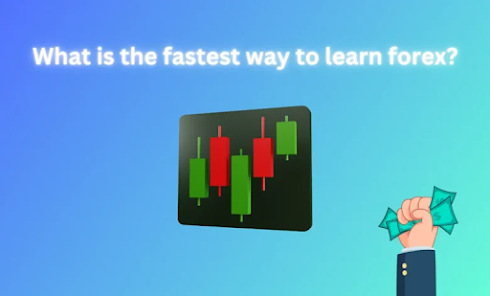If you’ve ever been curious about trading on the foreign exchange market but have been intimidated by the complexity of forex, fear not! Today, we’re diving into the fastest way to learn forex, based on factual data. With the right knowledge and resources, you’ll be able to navigate the forex market with confidence and start making informed trading decisions in no time. So, fasten your seatbelt and get ready to accelerate your forex learning journey.

What is the fastest way to learn forex?
There are several strategies that can help individuals learn forex trading quickly and efficiently. One of the fastest ways to learn forex is to take a structured online course or attend an in-person workshop. These programs often provide a comprehensive curriculum that covers all aspects of forex trading, from the basics to advanced strategies. Moreover, they usually include practical exercises, real-time trading simulations, and expert feedback, allowing learners to apply their knowledge in a risk-free environment. By immersing themselves in a well-designed educational program, aspiring forex traders can acquire the necessary skills and knowledge in a shorter period of time.
Another effective approach to expedite the learning process is to study from reputable educational resources. There are numerous books, ebooks, and online articles available that cover the fundamentals of forex trading. By reading and studying these materials, individuals can gain valuable insights into key concepts, trading strategies, technical analysis, and risk management. It is essential to choose resources that are authored by experienced traders or industry professionals to ensure accuracy and reliability of the information.
The utilization of demo accounts is another valuable tool when it comes to learning forex quickly. Many online brokers provide access to demo accounts, which simulate real trading conditions without using actual money. This enables individuals to practice and experiment with trading strategies in a risk-free environment. By utilizing a demo account, traders can gain hands-on experience, analyze market movements, and improve their decision-making skills without jeopardizing their financial capital.
Furthermore, seeking mentorship or guidance from experienced forex traders can greatly accelerate the learning process. Joining online trading communities or forums can provide opportunities to connect with seasoned traders who are willing to share their knowledge and insights. Engaging in discussions, asking questions, and seeking feedback from these experienced individuals can help learners avoid common mistakes and gain practical tips and strategies.
In summary, the fastest way to learn forex trading is to combine structured educational programs, self-study with reputable resources, practice using demo accounts, and seek mentorship from experienced traders. By utilizing these strategies, individuals can accelerate their learning curve and gain the necessary skills and knowledge to become successful forex traders. However, it is important to remember that forex trading requires constant learning and practice, so a commitment to ongoing education and self-improvement is vital for long-term success in the forex market.
Which timeframe is best for trading?
The best timeframe for trading is a subjective choice that depends on an individual trader’s goals, trading style, and availability. Traders have a variety of timeframes to choose from, including short-term, medium-term, and long-term.
Short-term trading, commonly referred to as day trading, is the act of initiating and terminating positions on the same day of trading.This timeframe is characterized by quick trades and can be highly volatile, offering potential for high profits. However, it requires constant monitoring of the market and can be stressful for some traders.
Medium-term trading, also called swing trading, typically involves holding positions for a few days to a few weeks. This timeframe allows traders to capture more significant price movements and reduces the stress of day-to-day volatility. It also provides more flexibility for traders who cannot commit to constant monitoring of the market.
Long-term trading, also known as position trading, involves holding positions for weeks, months, or even years. This timeframe is less affected by short-term market fluctuations and is ideal for traders who prefer a more relaxed approach. It also allows for better analysis of market trends and can result in larger profits. Nevertheless, it necessitates endurance and a perspective focused on the future.
Traders should consider their risk tolerance, time availability, and trading strategy when choosing a timeframe. It is also important to note that different markets may exhibit different characteristics in different timeframes. Therefore, conducting thorough research and understanding the dynamics of the chosen timeframe is crucial to succeed in trading.
I hope this article provided you with valuable insights on the fastest way to learn forex. Learning forex can be a challenging journey, but with the right approach and resources, you can accelerate your learning curve. Whether you choose to enroll in a forex course, read educational books, or practice on demo accounts, remember that consistency and dedication are key. It’s important to stay updated with market trends and strategies to stay ahead in this dynamic industry. If you have any questions or if there’s any specific aspect of forex learning you want to explore further, feel free to let us know in the comments below. Happy learning!

Post a Comment